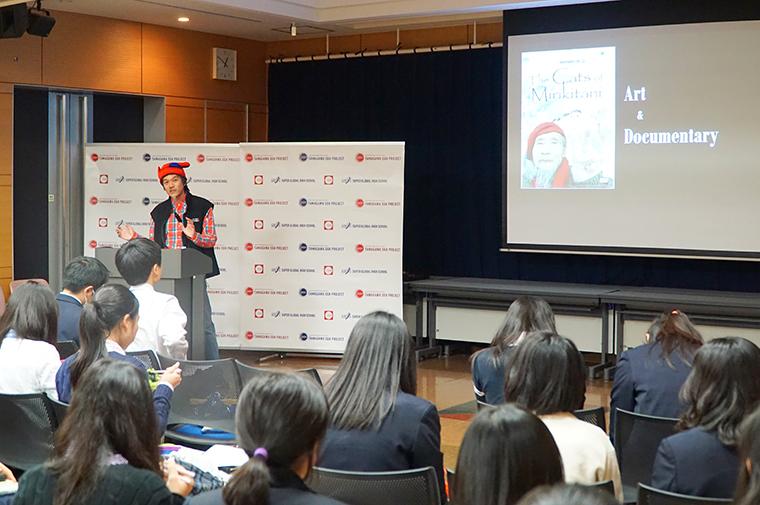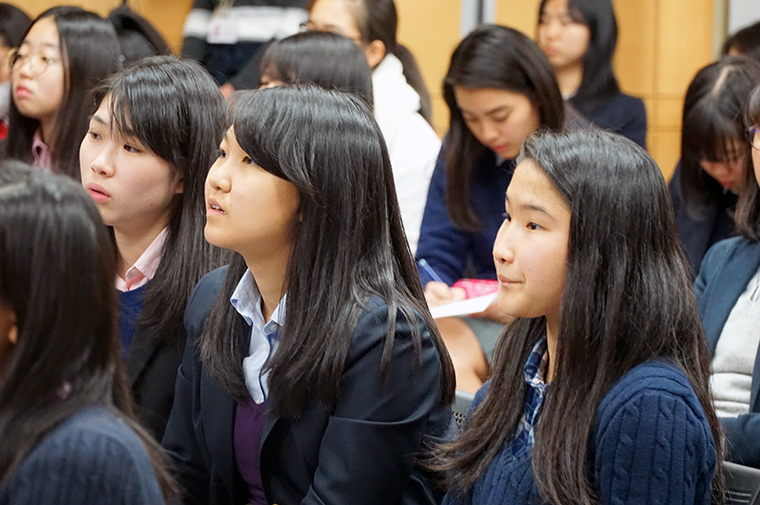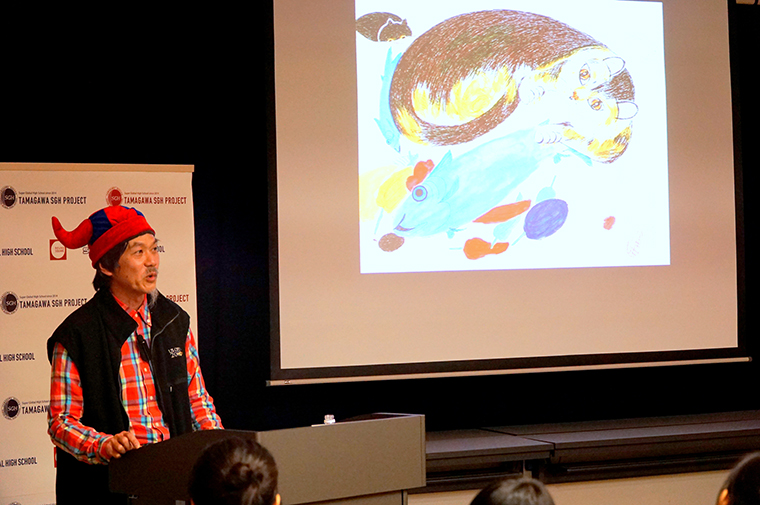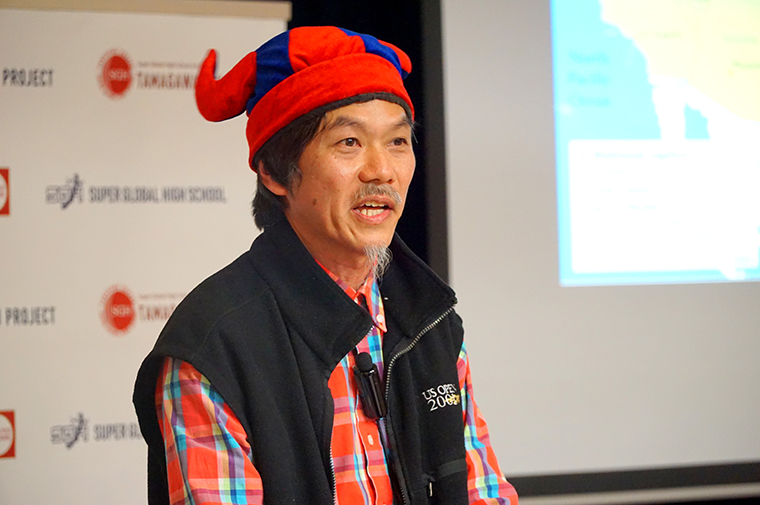In this global career lecture, Mr. Masa Yoshikawa, a film producer and director was invited as a lecturer.
“I want people to not have a hard time understanding the word ‘documentary.” Mr. Yoshikawa appeared wearing a red Viking hat. He spoke in a gentle tone which softened the atmosphere in the venue.
Mr. Yoshikawa talked about his career and work, both overseas and in Japan, using the documentary movie “Mirikitani’s Cat” which he produced as an example.

Mr. Yoshikawa was born and raised in Tokyo and did not see anything he wanted to really to do in the future even after entering university.
At that time when he started to get interested in movies, though it was later in his college life.
When he graduated from college, he re-enrolled at an American university, which he felt was the most suitable environment for learning about movies. There he acquired his film production skills.

“If there is something interesting to me, I will do it,” Mr. Yoshikawa said. There was a quiet conviction in the words he spoke, as he looked back on his entry into the world of movies.
After finishing school, he worked in New York and Japan focusing on his own interests. He got involved in broadcasts of major league baseball, movie subtitling, interviews with actors, film production actress, and many other types of video work at various stages.

“Have you ever seen a live major league broadcast?” he asked? “There are actually simple and somewhat complex stories to tell.” “When a famous actress who new to the industry at that time, was involved in a movie and came to Japan, all of the staff working on the trip members called stores to find a certain brand of cereal she wanted.” He illustrated this reality with stories from his past.
The stories of working in the entertainment industry, which was interesting for the students, was very exciting that they showed their excitement throughout the lecture.


When Mr. Masa got involved in the documentary film “Mirikitani’s Cat” it was after a chance encountered.
He was asked in an elevator one day “Do you understand Japanese? There is something that I want you to help me with.” The woman who asked him was Linda Hatten Dorff, the director of “Mirikitani’s cat”. Mr. Yoshikawa started to work on this as a producer. His “interest” in this work built up more and more.

“Mirikitani’s Cat” is a documentary movie following Jimmy Mirikitani, an 80-year-old Japanese American painter who lived on the streets of New York. He began to live with film director Linda Hattendorf after the terrorist attacks in 2001, after which his past became clearer.

Mr. Mirikitani was one of the Japanese Americans who were put in concentration camps in the United States during the Second World War and they were deprived of both work and social status.
Mr. Mirikitani, who was aiming to be a painter, moved to the United States where he lost the control of his life due to the government. The movie depicts how he rejected help due to a lot of anger. He opened his heart little by little with the support of people around him though and gradually accepted their help.
“I think the reason why his wounds of his heart by the United States which he hated for many years was healed is because he touched the kindness of that Americans.”

“His facial expressions, posture, and even his paintings changed after his mind was freed by the help of people around him”. The scenes delivered messages like “it is up to human beings to heal the wounds of the human heart” and “things such as connections with people and relationships enrich people’s lives”.
Ten years have passed since the release of this film, but it is being screened nationwide along with new short stories. This work continues to move the hearts of many people, and the warm hearts of the people involved in the movie continue to inspire.

After the lecture, various questions were raised from the students. “I am interested in movie production. How much did it cost to make this movie?” “What was hard about making this movie for you?”
There was also a student who told Mr. Yoshikawa she had gotten fliers for the screening of the film “Mirikitani’s Cat” and the sequel, “Mirikitani’s Memory”.

Students received a lot of motivation from Mr. Yoshikawa’s style which combined experiences from his work in Japan and abroad which connected people and their problems with his own interest as a starting point.
They though about what they could do to magnify their own “interest” to connect to the things they would do in the future.




